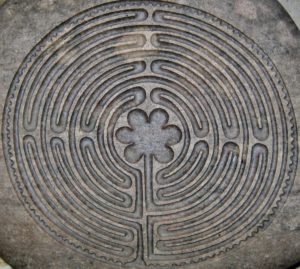
– Photo by J. E. Ketchel
The human mind is a vehicle in constant motion. When we drive our car we actually turn the driving over to the subconscious mind, the home of established patterns of perceiving and acting, while our conscious mind journeys freely into other realms of thought and imagination. The array of established patterns stored in the subconscious mind are known as habits.
Some habits are archetypal in nature, meaning they are encoded pre-birth in the subconscious, to direct perception and action according to the needs of a species. Animals function almost entirely at a preprogrammed habitual level. A seasoned hunter actually becomes bored at the ‘sport’ of hunting, as animals are easy prey, traveling the same monotonous patterns daily.
The human animal has the advantage of adding new habits to the subconscious pool through the exercise of conscious suggestion and intent. Most suggestions, however, are obtained from the socialization process. Behavior is largely shaped by the reward and punishment responses from one’s social environment. These reinforced patterns become strongly recommended to the subconscious, eventually taking up residence as established habits.
Sometimes habits are established via completely non-conscious processes. If one experiences a serious trauma during an activity at a particular location, the unconscious reptilian part of the brain takes pictures of these circumstances and directly encodes a message to the subconscious to avoid subsequent locations that look similar. These are experienced as triggers, which are managed via the subconscious habit of avoidance.
The conscious mind may prove quite powerless to overcome these habitual reactions due to the potent energy programmed by the reptilian brain. Habit change at this level requires trauma processing to rewrite and override the program of avoidance. During processing we gradually achieve a neutral response to a trigger, allowing a new program of calm to be introduced and accepted by the subconscious mind, overriding the now anachronistic and unnecessary habit of avoidance.
Beliefs are tremendous influencers upon habit formation. The current social dimension of human interaction is largely governed by belief systems that have become encoded in automatic subconscious reactions. The possibility of calm communication between groups is largely blocked by the automatic perceptions, judgments and behaviors driven by these powerful habits that have been shaped by belief.
Most of our lives are lived via subconscious habits. If we had to instruct ourselves to breathe to obtain every needed breath, we would become exhausted in no time. Habits are not only necessary but quite welcome for good economy of our psychic energy. Nonetheless, habits tend to limit innovation and creativity, as well as keep us frozen in the past.
Intents, suggestions, mantras, and prayers are repetitive techniques to facilitate the formation of new, consciously driven habits. Begin with a definite verb like “will” or “am”. Too often we begin with “I’d like to” or “I hope” or “I want”. The subconscious works best with definite, not ambivalent or begging, statements.
Perseverance is critical in new habit formation. The subconscious is used to its default programs, whether inherited or learned. Unless we are quite persistent in the repetition of our suggestions for a new program, it will move toward the default position. Remain calm and persevering, with no attachment to the goal, to avoid the static of frustrated emotion that then weakens the power of the suggestion.
Suggestions are further strengthened when they are imbued with conscious presence as they are stated. Suggestions are most powerful when not opposed by blocking beliefs or traumatic events still charged in the unconscious. If powerful emotions or triggers litter the mindscape, best to engage in intentional processing to clear the debris, in preparation for establishing new desired habits.
May our habits achieve peak performance through a positive working relationship with our conscious minds. May our conscious minds put themselves at the service of the greater good of the Self, to ensure healthy habits for the betterment of all.
Habitually yours,
Chuck





